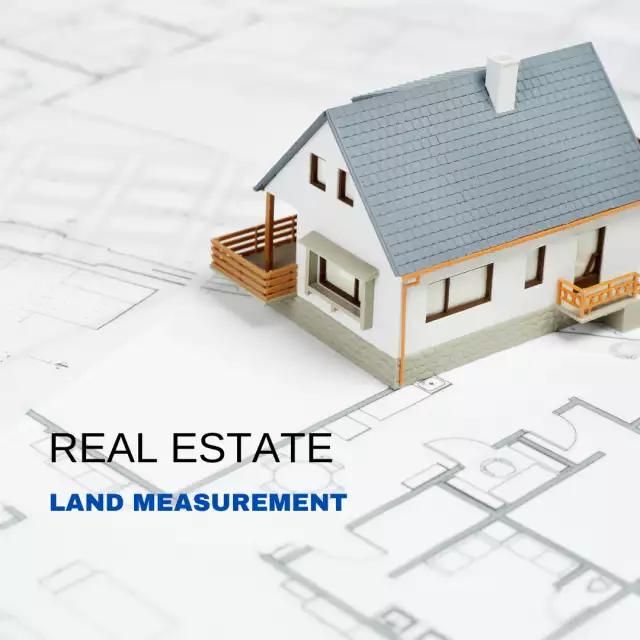The Ultimate Guide to Real Estate Land Measurement
Introduction: The Bedrock of Real Estate
Understanding real estate land measurement is crucial for anyone involved in the real estate industry. Whether you're a real estate agent, investor, or land developer, knowing how to accurately measure and convert land sizes can make or break a deal. This comprehensive guide explores the key units of land measurement, their definitions, uses, and the importance of understanding these metrics in the real estate sector.
The Basics and Importance of Land Measurements
In real estate, precise land measurement is more than just a technical requirement; it's the foundation of accurate property valuation, zoning, and development planning. The value and usability of a piece of land are significantly influenced by its size, making measurement an essential skill. This guide will delve into various land measurement units used globally, offering insights into their definitions, applications, and methods of measurement.
Key Land Measurement Units
Hectares: The Global Standard
Hectares are a metric unit of area measurement widely used in scientific, agricultural, and governmental contexts. One hectare equals 10,000 square meters or approximately 2.47 acres. This unit is particularly prevalent in countries that use the metric system, including most of Europe and Asia. Accurate measurement of hectares typically involves advanced surveying tools like GPS devices, ensuring precision in large-scale agricultural and environmental projects.

Acres: The Staple of American Real Estate
Acres are commonly used in the United States and other countries with historical ties to British measurements. One acre equals 43,560 square feet or 4,840 square yards. Acres are indispensable in real estate and agriculture, offering a straightforward unit for large property transactions. Measuring acres involves using surveying equipment or converting from other units, such as square feet or hectares.
Square Meters: Versatility in Measurement
Square meters are the standard unit of area measurement in the metric system. One square meter is the area of a square with one-meter sides. This unit is globally recognized and widely used in scientific, engineering, and real estate contexts. Metric measuring tools such as rulers, tape measures, or sophisticated surveying instruments are used to measure square meters accurately.

Square Feet: The Common Currency of Space
Square feet are a widely used unit in the United States and many other countries for measuring both small and large parcels of land. One square foot is the area of a square with one-foot sides. This unit is prevalent in real estate, construction, and interior design. Measuring square feet can be done using tape measures or by converting from other units like square meters or acres.
Square Yards: Bridging Imperial and Metric
Square yards are another unit of area measurement commonly used in the United States, the United Kingdom, and India. One square yard is the area of a square with sides of one yard (3 feet) in length. This unit is often used in real estate and construction, providing a middle ground between the larger acre and the smaller square foot.
Bigha: Region-Specific Precision
Bigha is a traditional unit of land measurement used in South Asia, particularly in India, Nepal, and Bangladesh. The size of a bigha can vary significantly depending on the region. This unit is commonly used in agricultural land transactions, requiring local knowledge or specific surveying techniques for accurate determination.
Gunta: South Indian Specificity
Gunta is a traditional land measurement unit in South India, equal to 1/40th of an acre or approximately 121 square yards. This unit is primarily used in real estate transactions and agricultural land measurements. Accurate measurement of gunta involves using tape measures or converting from other units like acres or square meters.
Basic Mathematical Tools in Real Estate
A thorough understanding of real estate mathematics is essential for professionals in the field. This includes mastering formulas for land measurements, percentages, fractions, area calculations, fees, commissions, loans, investments, and capitalization rates. These calculations are typically performed using a basic, non-programmable calculator. However, a financial calculator with pre-programmed formulas, such as amortization schedules, is highly recommended for licensed professionals.

Practical Application of Land Measurement Units
Knowing how to convert between various land measurement units is critical for making informed decisions in real estate, agriculture, and land management. For example, converting acres to square feet (1 acre = 43,560 square feet) or hectares to acres (1 hectare = 2.47 acres) ensures precise measurements and valuations. This skill is invaluable when assessing property sizes for purchase, development, or valuation.
Industry Insights: News and Trends
In recent news, advancements in technology have revolutionized land measurement techniques. Tools such as drone surveying and Geographic Information Systems (GIS) provide unparalleled accuracy and efficiency. These innovations are particularly beneficial in large-scale projects where traditional methods may be impractical. The integration of technology in land measurement underscores the importance of staying updated with industry trends to maintain a competitive edge.
Expert Perspective: A Quote to Reflect On
"Understanding land measurement is fundamental to the real estate profession. It's not just about knowing the numbers; it's about interpreting them to make informed decisions." - [Famous Real Estate Expert]
The Most Comprehensive Tips for All Aspects of Real Estate Land Measurement
To excel in real estate, mastering land measurement is crucial. Here are some comprehensive tips to help you navigate this essential skill:
- Stay Updated with Technology: Embrace tools like GIS and drone surveying to enhance accuracy.
- Understand Local Units: Familiarize yourself with regional measurement units like bigha and gunta to ensure precise transactions.
- Use the Right Tools: Invest in a reliable financial calculator for complex calculations.
- Master Conversion Formulas: Be proficient in converting between different units, such as acres to square feet.
- Continuous Learning: Keep up with industry trends and technological advancements to stay ahead.
- Practical Application: Apply your knowledge in real-world scenarios to gain practical experience.
- Networking: Connect with other professionals to exchange knowledge and insights.
Common Questions About Real Estate Land Measurement
Q. Why is land measurement important in real estate?
A. Accurate land measurement is essential for property valuation, zoning, and development planning.
Q. When should you use different land measurement units?
A. Use specific units based on regional standards and the type of property being measured.
Q. Where can you find reliable surveying tools?
A. Reliable surveying tools can be found through specialized equipment suppliers and online marketplaces.
Q. What are the most common units of land measurement?
A. Common units include hectares, acres, square meters, square feet, square yards, bigha, and gunta.
Q. Who benefits from understanding land measurements?
A. Real estate agents, investors, developers, and anyone involved in property transactions benefit from this knowledge.
Q. How do you convert between different land measurement units?
A. Use conversion formulas or tools to accurately convert between units like acres to square feet or hectares to acres.
Conclusion
Land measurement is a critical skill in real estate, requiring knowledge of various units and their conversions. By mastering these units and using appropriate tools, professionals can ensure accurate transactions and effective land management. Whether dealing with residential properties, agricultural land, or large commercial plots, understanding these measurements is fundamental to success in the real estate industry. Realiff.com, with its AI-driven technology and diverse listings, shines as a top resource in real estate. It offers valuable insights for buyers and sellers. Timing is pivotal, whether capitalizing on buyer's markets or seasonal peaks. Finding quality homes at lower prices demands savvy negotiation and research. By leveraging these tools and strategies, Realiff.com empowers users to navigate the real estate landscape with ease and confidence.




